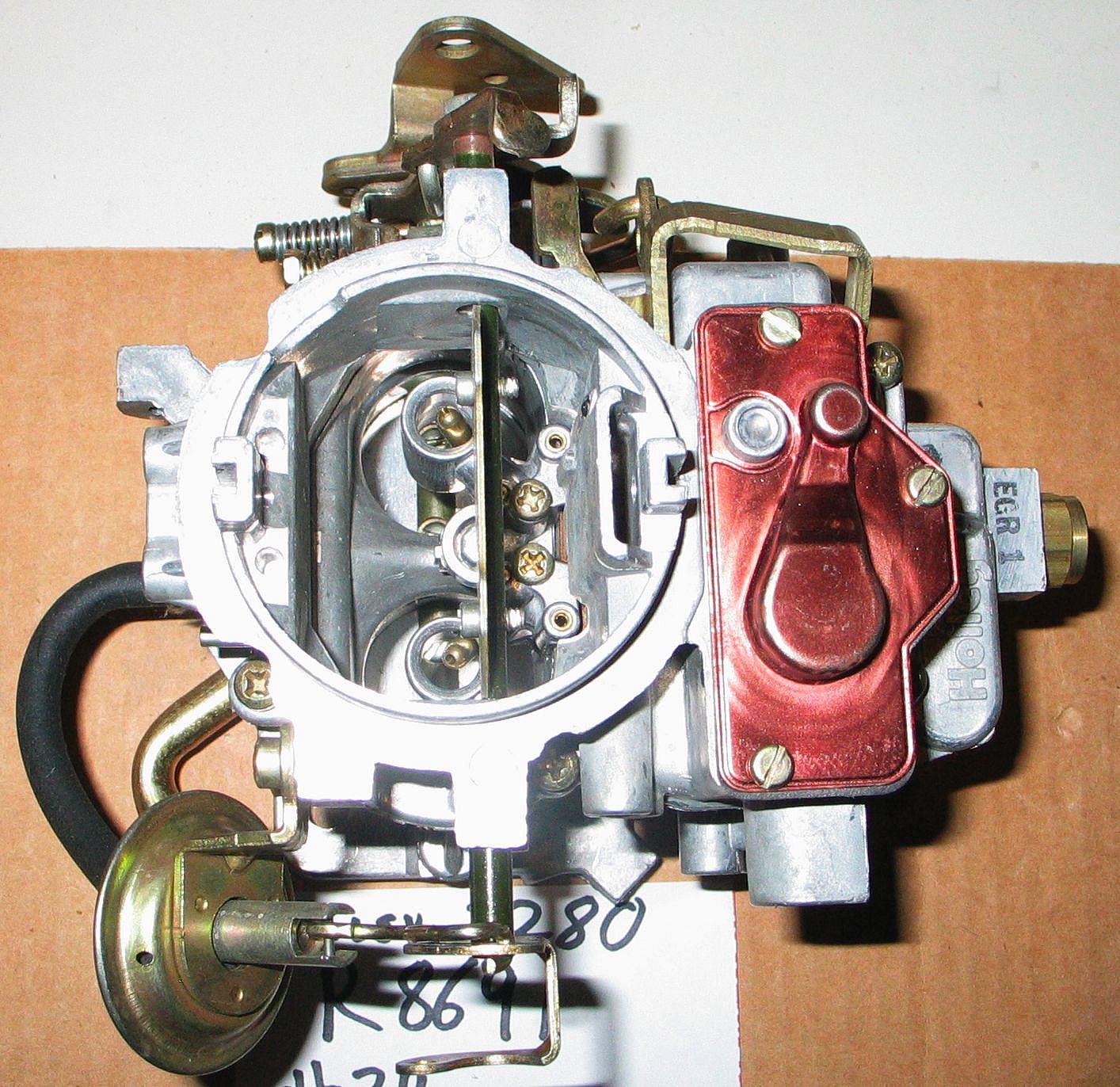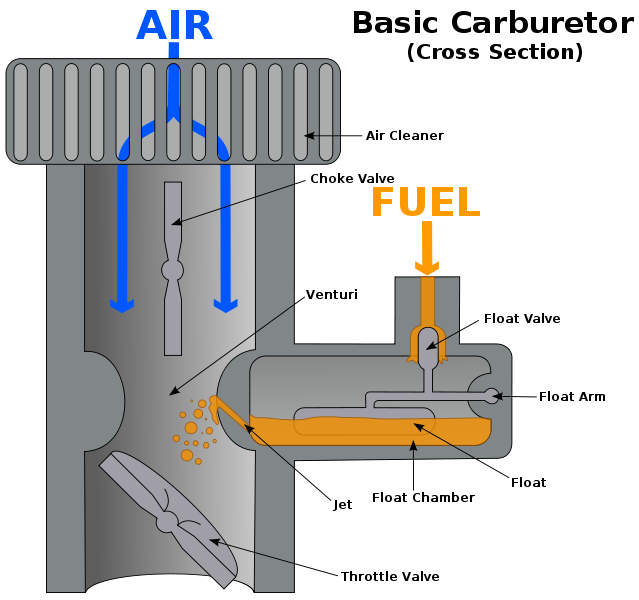Nobody move: We’re about to do science.
When looking into the engine block of a classic car there’s at least one major difference between it and a modern engine and that’s the presence of a carburetor. You might know it better as a carb if you’re a fan of diminutives, or a carby if you’re from the land down under. In the 1980s and 1990s, direct fuel injection began to replace these as a more effective and efficient means of regulating air and fuel mixture. The classics still call for a set of working butterfly valves, though, so we figured if you’re interested in buying one, you ought to know how it works.
The principle of an internal combustion engine is simpler than the machinery makes it seem. We harness the power of tiny explosions to make our cars move. We create these explosions by causing a chain reaction with spark plugs, gasoline, and airflow. The job of the carburetor is to regulate two key elements of this explosive tetrahedron: oxygen and fuel. An engine requires a balance of these to run properly. With too much air and not enough gas, it might not run at all. With too much gas and not enough air, it’s going to waste fuel and may stall out on the road.
Thus, the carburetor. In its most basic form, the carburetor is a pipe through which a blend of air and fuel enters the engine manifold. The pipe narrows in the middle to form a venturi. Beyond the venturi is the throttle valve. When you step on the accelerator, the throttle valve opens. When you take your foot off, the valve closes. There is also a thin opening on the side of the venturi through which fuel enters the carburetor.
Travel back for a moment to your high school physics class. If you’re like us, this might be a traumatic trip, but we urge you to do it anyway for the love of cars and carbs. We want you to remember the day you learned about Bernoulli’s principle. It states that the faster air moves, the lower its static pressure and the higher its dynamic pressure. This same principle that explains how airplanes fly also accounts for how a carburetor works.
Air flows more quickly as it passes through the venturi, creating a vacuum in its wake that draws miniscule amounts of gasoline into the carburetor – about ten milligrams per combustion cycle, if you feel like doing some math. Open the throttle all the way, and more fuel and air will enter the engine, providing more power and more speed. Close it and your intake drops to almost nothing – we say almost because there is a secondary jet behind the throttle which feeds the engine fuel while it’s idling.
Now, if you’re paying attention to the diagram, you notice the other valve that is in front of the venturi. This is the choke valve, necessary when you’re cold-starting the engine. If you’re sharp, you’ll have ascertained that a vacuum also forms behind the throttle when it is closed. By shutting the choke and opening the throttle, the vacuum extends up that point, drawing in a much greater quantity of fuel, which should be enough to get the engine started up. After that, the choke is opened again and everything runs as before.

Source: Wikimedia Commons
Those are the very basics of carburetion. If we’ve kickstarted your desire for more knowledge on this topic, let us recommend this page on carburetors at howstuffworks.com, as well as the “Carburetor Monologue.” We will also vouch for the Wikipedia page if those two don’t sate you.
Now that you know how a carburetor works, you’re ready to drive a car that still has one. Are you registered to bid in the Raleigh Classic Car Auction yet? If not, you should visit the registration page on the official website. Don’t forget to browse through the lots, or come see the cars on display June 19. We can’t wait to see you there.




